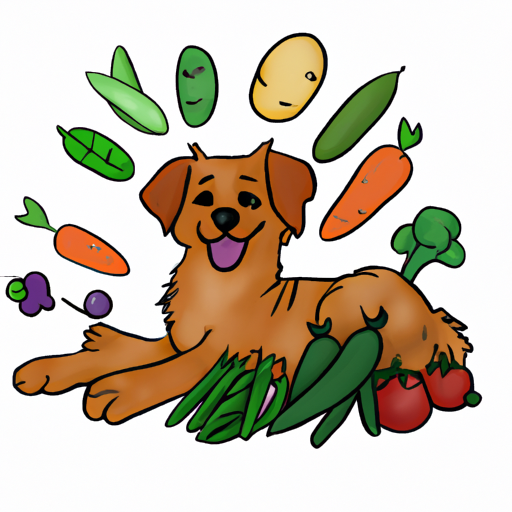As a caregiver, your role isn’t just about providing comfort and companionship to your furry friend; it also includes ensuring that they receive proper nutrition. You are their advocate and their voice when it comes to their health and wellbeing. So, let’s dive into the world of dog-friendly vegetables.
H2: The Benefits of Vegetables for Dogs
Vegetables are a rich source of vitamins, minerals, and fiber, all of which are crucial for your dog’s overall health. They can enhance their immune system, promote healthy skin, and even reduce the risks of certain diseases.
Some of the common benefits include:
- Improved digestion due to high fiber content
- Antioxidants for boosting immunity
- Low in fat and calories, helping maintain a healthy weight
- Rich in essential vitamins and minerals
H2: The Top 5 Vegetables Your Dog Can Enjoy
While not all vegetables are safe for dogs, many are not only safe but also beneficial. Here are five vegetables your dog can enjoy:
- Carrots: High in beta carotene and fiber, carrots are great for your dog’s dental health as they help clean the teeth.
- Cucumbers: Low in calories and fat, cucumbers are a refreshing treat that’s also beneficial for dogs with weight issues.
- Green Beans: A good source of protein and fiber, green beans can be a nutritious addition to your dog’s diet.
- Pumpkin: Rich in fiber and vitamin A, pumpkin can help with digestive issues.
- Sweet Potatoes: Packed with vitamins and fiber, sweet potatoes are a healthy treat that most dogs love.
| Vegetable | Benefits |
|---|---|
| Carrots | Dental health, beta carotene, fiber |
| Cucumbers | Low calorie, low fat |
| Green Beans | Protein, fiber |
| Pumpkin | Digestive health, vitamin A |
| Sweet Potatoes | Vitamins, fiber |
H2: Preparing Vegetables for Your Dog
When it comes to feeding your dog vegetables, it’s essential to prepare them correctly. Raw vegetables can be hard for dogs to digest, so it’s often best to cook them first.
- Always wash vegetables thoroughly to remove any pesticides or chemicals.
- Cut them into small, manageable pieces to prevent choking.
- Avoid adding any seasonings or oils.
- Steaming is the best cooking method as it retains the most nutrients.
H2: Vegetables to Avoid
Just as there are vegetables that are good for dogs, there are also those that can be harmful. Onions, garlic, and mushrooms, for instance, can be toxic to dogs and should be avoided.
H2: Consult with a Veterinarian
As a caregiver, always consult with your veterinarian before introducing any new foods into your dog’s diet. They can provide you with the most accurate information based on your dog’s specific needs and health status.
FAQs
Q: Can I feed my dog raw vegetables?
A: Some raw vegetables can be hard for dogs to digest. It’s often best to cook them first.
Q: Are all vegetables safe for dogs?
A: No, not all vegetables are safe for dogs. Onions, garlic, and mushrooms, for instance, can be toxic to dogs.
Q: How often can I give my dog vegetables?
A: Vegetables should be an addition to a balanced, protein-rich dog diet and not the main course. Consult your vet for the best advice.
Your role as a caregiver is a vital one. By understanding what vegetables your dog can and cannot have, you can ensure they’re not only happy, but healthy as well.



